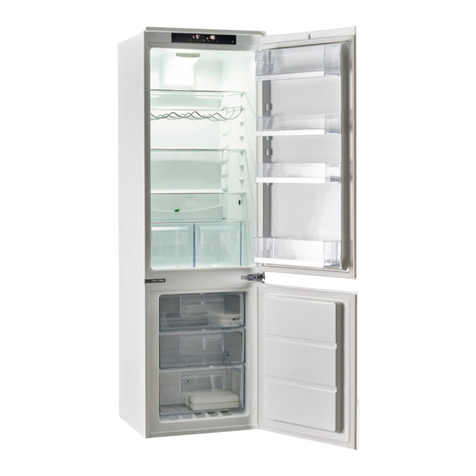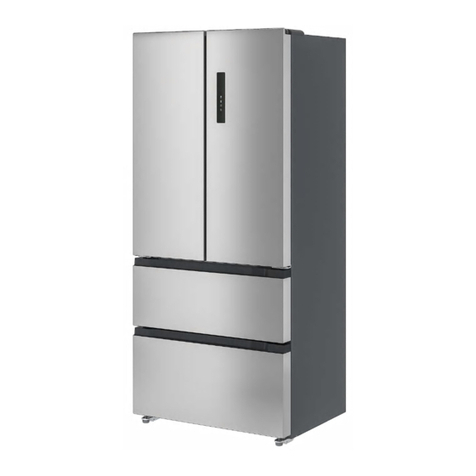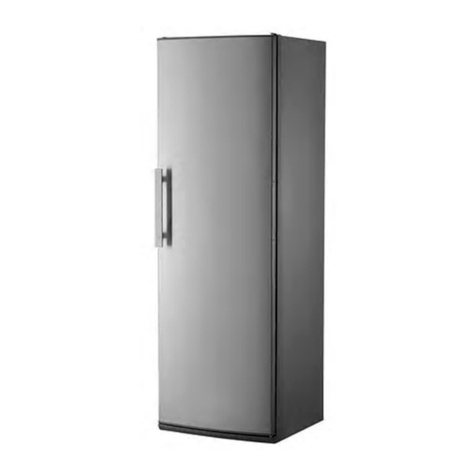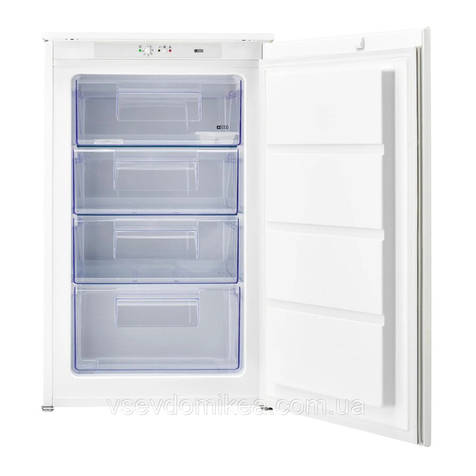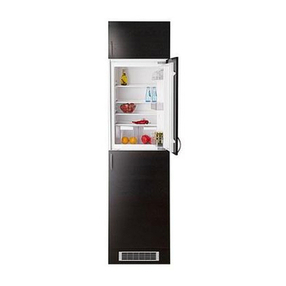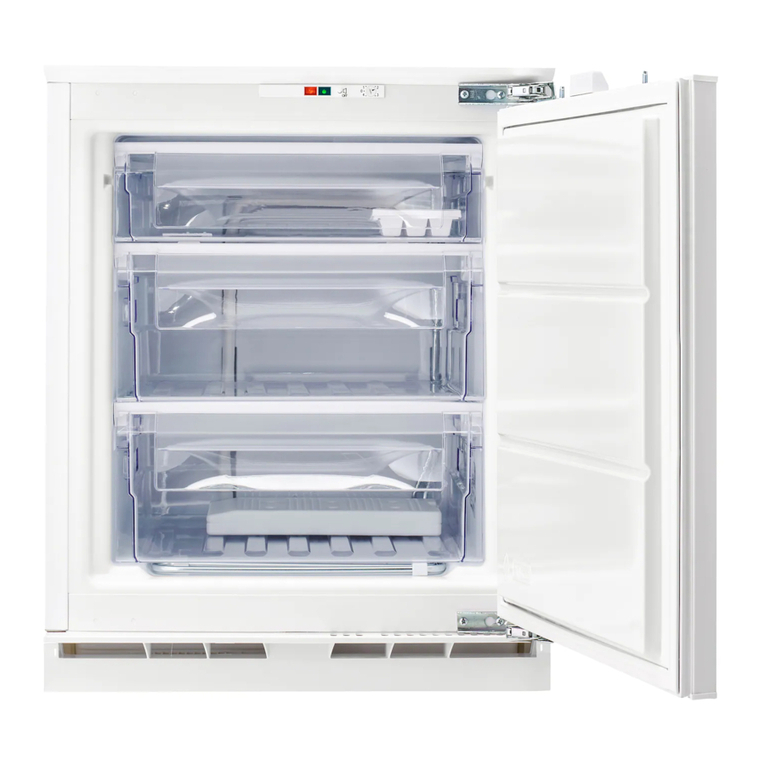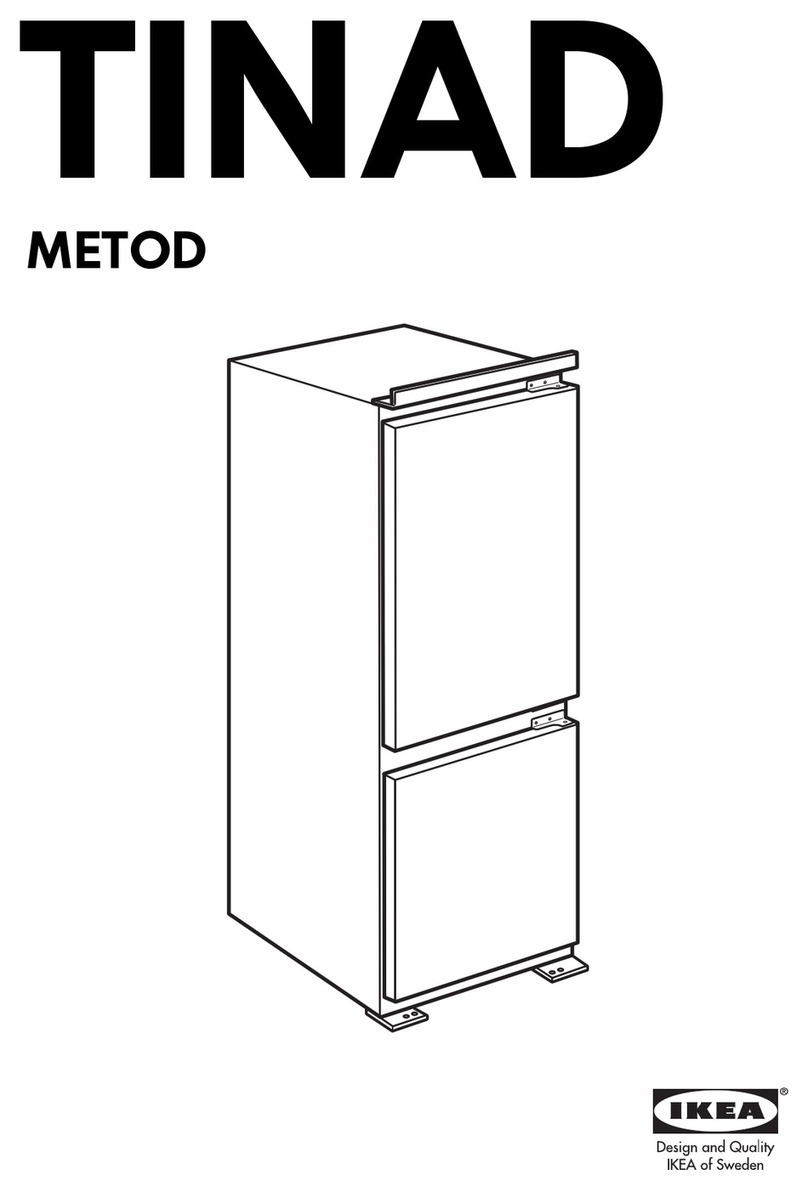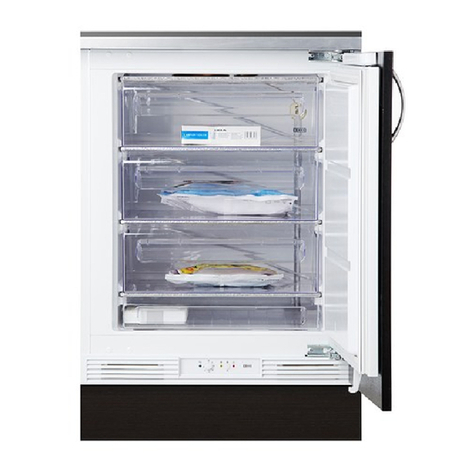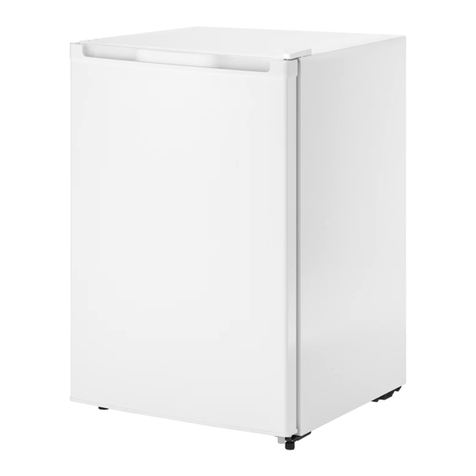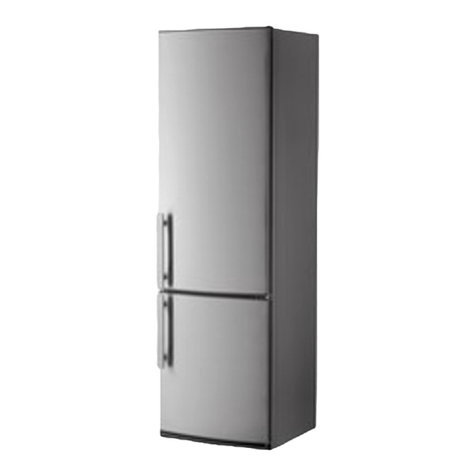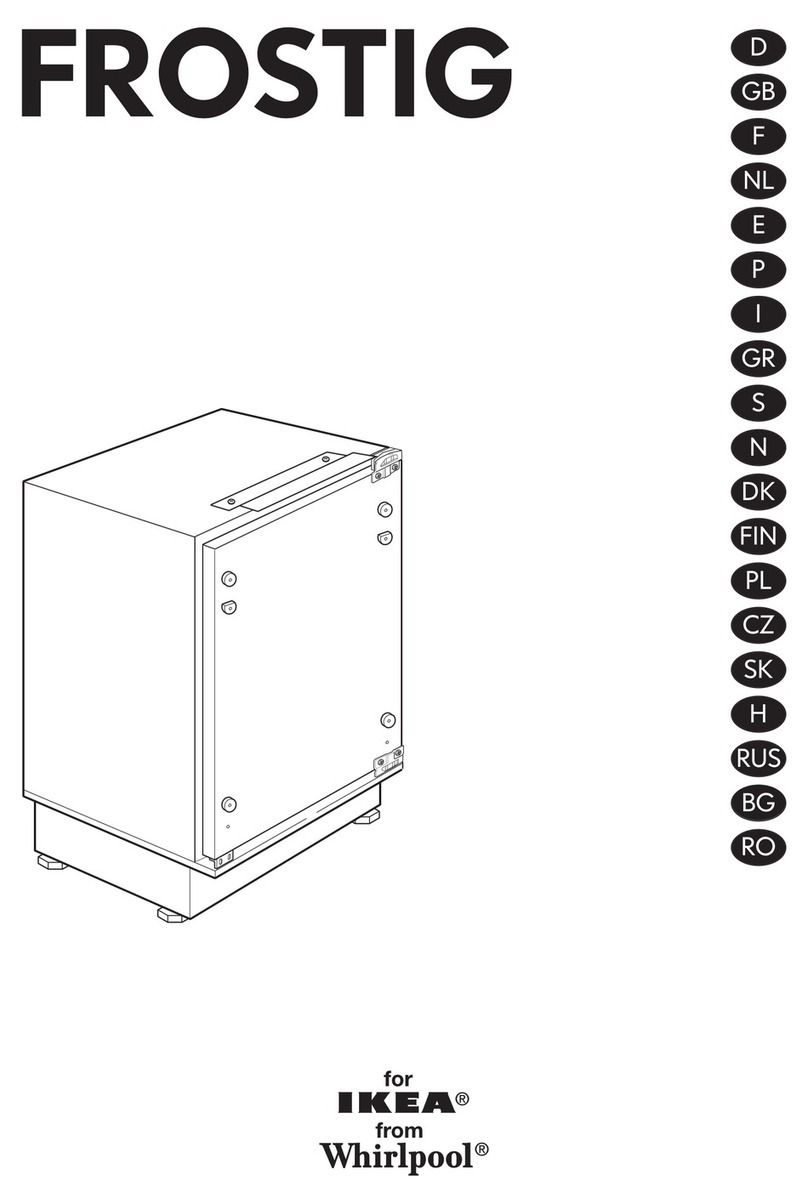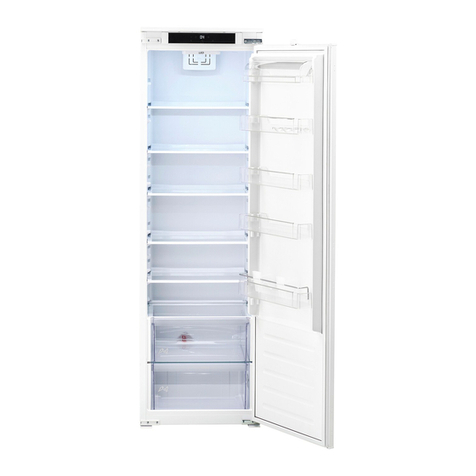
ENGLISH 6
Do not store explosive substances such as
aerosol cans and do not place or use gasoline
or other ammable materials in or near the
appliance.
Do not swallow the contents (non-toxic) of
the ice packs (provided with some models).
Do not eat ice cubes or ice lollies immediately
after taking them out of the freezer since they
may cause cold burns.
For products designed to use an air lter
inside an accessible fan cover, the lter must
always be in position when the refrigerator is
in function.
Do not store glass containers with liquids
in the freezer compartment since they may
break. Do not obstruct the fan (if included)
with food items. After placing the food check
that the freezer door closes properly.
Damaged gaskets must be replaced as
soon as possible.
Use the freezer compartment only for
storing frozen food, freezing fresh food and
making ice cubes.
Avoid storing unwrapped food in direct
contact with internal surfaces of the freezer
compartments.
C-Pentane is used as blowing agent in the
insulation foam and it is a ammable gas.
The most appropriate compartments of the
appliance where specic types of food are
to be stored, taking into account dierent
temperature distribution in dierent
compartments in the appliance, are as
follows:
4 star zone (****) compartment is suitable
for freezing foodstus from ambient
temperature and for storing frozen food
as the temperature is evenly distributed
throughout the entire compartment.
Purchased frozen food has the storage
expiration date stated on the packaging.
This date takes into account the type of food
being stored and therefore this date should
be respected. Fresh food should be stored
for the following time periods: 1-3 months for
cheese, shellsh, ice cream, ham/sausage,
milk, fresh liquids; 4 months for steak or
chops (beef, lamb, pork); 6 months for butter
or margarine, poultry (chicken, turkey); 8-12
months for fruits (except citrus), roast meat
(beef, pork, lamb), vegetables. Expiration
dates on the packaging of foods in the 2-star
zone must be respected.
To avoid food contamination, please observe
the following:
– Opening the door for long periods
can cause a signicant increase of the
temperature in the compartments of the
appliance.
– Regularly clean surfaces that may come into
contact with food and accessible drainage
systems.
– Clean water tanks if they have not been
used for 48 h; ush the water system
connected to a water supply if water has not
been drawn for 5 days.
– Store raw meat and sh in suitable
containers in the refrigerator, so that it does
not come into contact with or drip onto
other food.
– Do not freeze fresh food in one, two or
three-star compartments.
– If the refrigerating appliance is left empty
for long periods, switch o, defrost, clean,
dry, and leave the door open to prevent
mould developing inside the appliance.
INSTALLATION
The appliance must be handled and
installed by two or more persons - risk of
injury. Use protective gloves to unpack and
install - risk of cuts.
Installation, including water supply (if any),
electrical connections and repairs must be
carried out by a qualied technician. Do not
repair or replace any part of the appliance
unless specically stated in the user manual.
Keep children away from the installation site.
After unpacking the appliance, make sure that
it has not been damaged during transport.
In the event of problems, contact the dealer
or your nearest Aftersales Service. Once
installed, packaging waste (plastic, styrofoam
parts etc.) must be stored out of reach of
children - risk of suocation. The appliance
must be disconnected from the power supply
before any installation operation - risk of
electric shock. During installation, make sure
the appliance does not damage the power
cable - risk of re or electric shock. Only
activate the appliance when the installation
has been completed.
Be careful not to damage the oors (e.g.
parquet) when moving the appliance. Install
the appliance on a oor or support strong
enough to take its weight and in a place
suitable for its size and use. Make sure the
appliance is not near a heat source and that
the four feet are stable and resting on the
